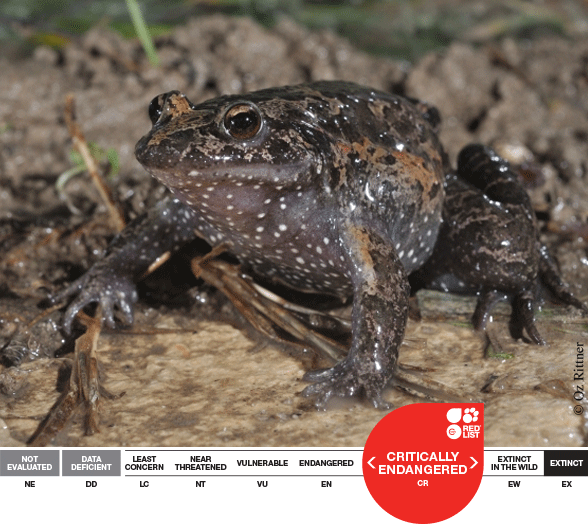
The Hula Painted Frog, Discoglossus nigriventer, is an endemic frog to Israel listed as ‘Critically Endangered’ on the IUCN Red List of Threatened Species. It is only found in two sites near Lake Hula and nearby swamps, and it may have been present in similar adjacent habitats in Syria. It is a medium-sized frog with rush-colored patches on the back and a dark belly with white spots. The Hula Painted Frog occurs on the edge of freshwater wetlands but recent observation suggests that this species may be more terrestrial. A single adult specimen was collected in 1955, and had not been seen for four decades until it was rediscovered by a park ranger on 15 November 2011. It was previously listed as ‘Extinct’ on the IUCN Redlist. Amazingly, new research on this rediscovered species shows that its closest relatives are not current living frogs but prehistoric frogs, extinct for millions of years. This “living fossil” has survived since the Oligocene as well as the destruction of the Hula wetlands.
The Hula Painted Frog is now listed as Critically Endangered because its extent of occurrence is less than 2 km2 and its habitat is under threat. In the 1950s, the Hula marshes were drained to eradicate malaria and to develop agriculture. Only 5% (3 km²) of the original marshland area remained after drainage. The remaining wetland was designated as the Hula Nature Reserve in 1964 as a refuge for water birds. It is believed that the number of individuals is declining due to the high predation pressure posed by high density of water birds.
The Hula Painted Frog is a protected species in Israel. The Israel Nature and Parks Authority (INPA) plans to monitor this species to collect more information on the distribution and natural history of this species which is currently lacking.
